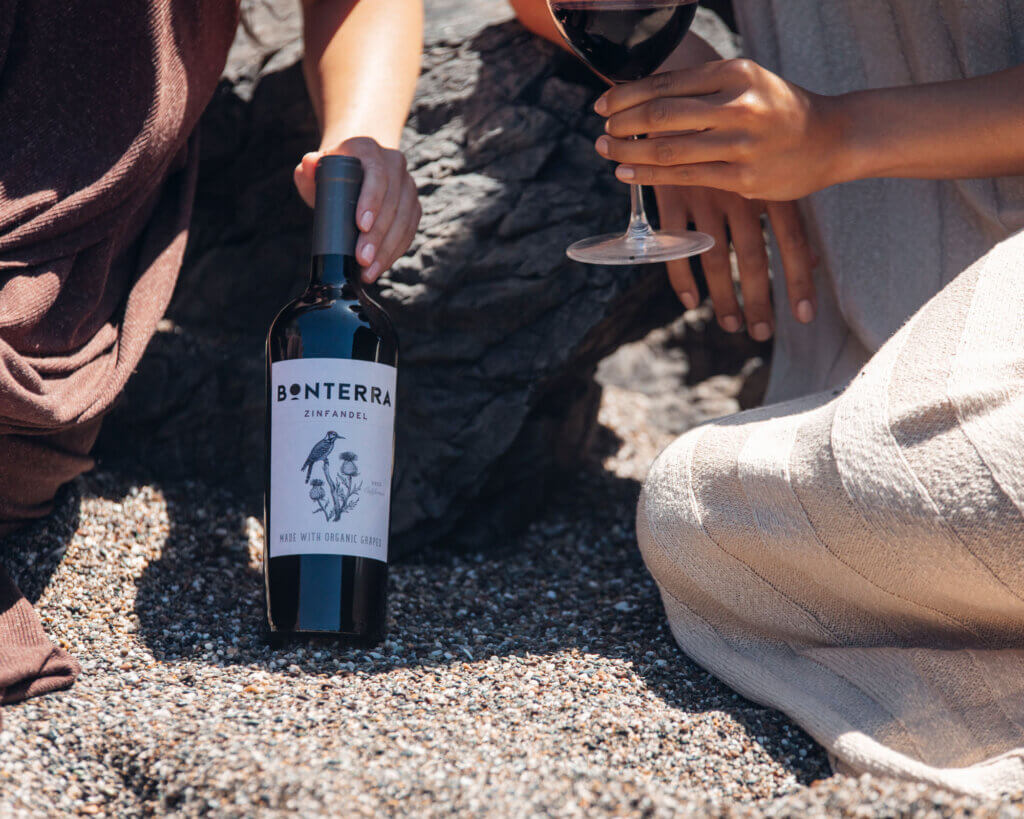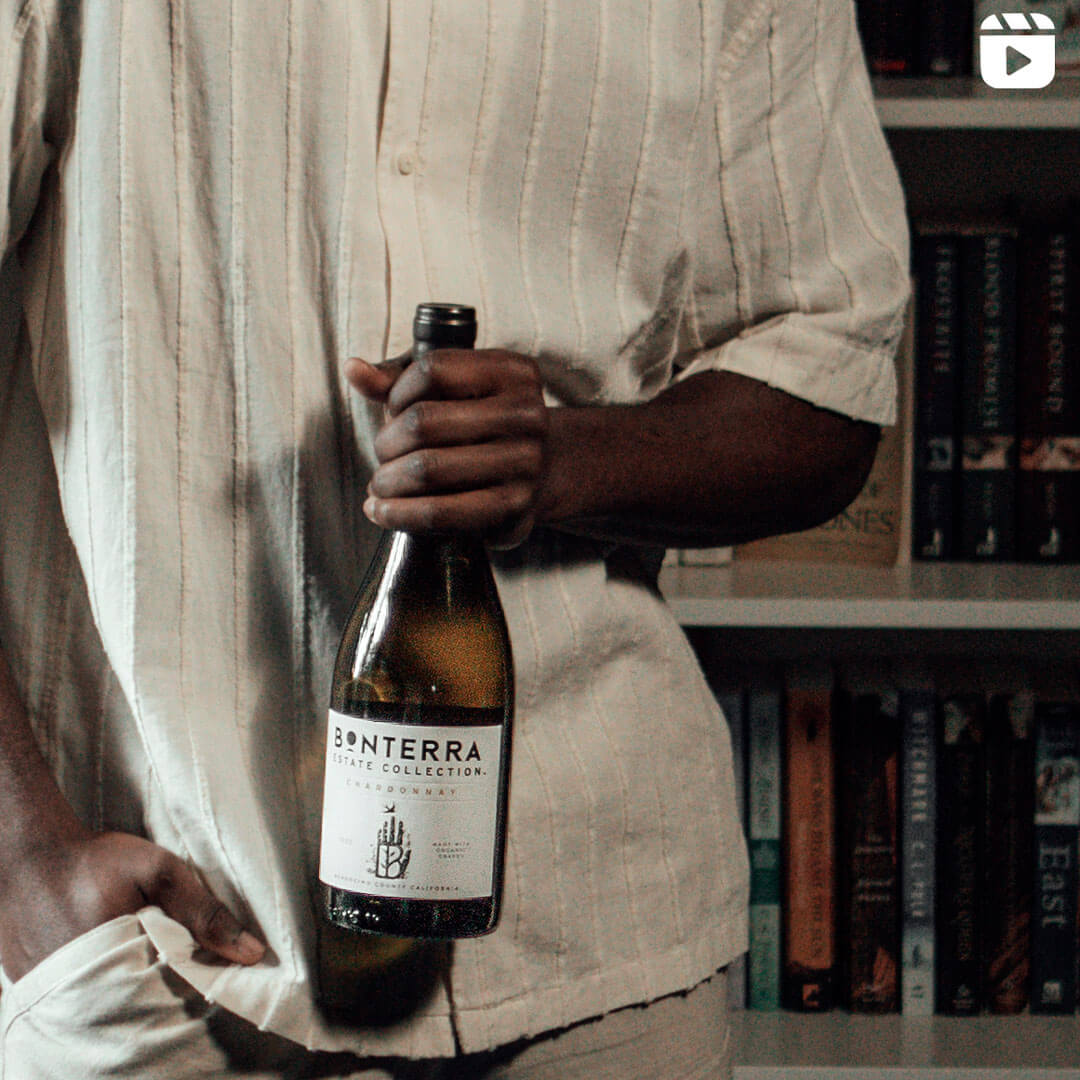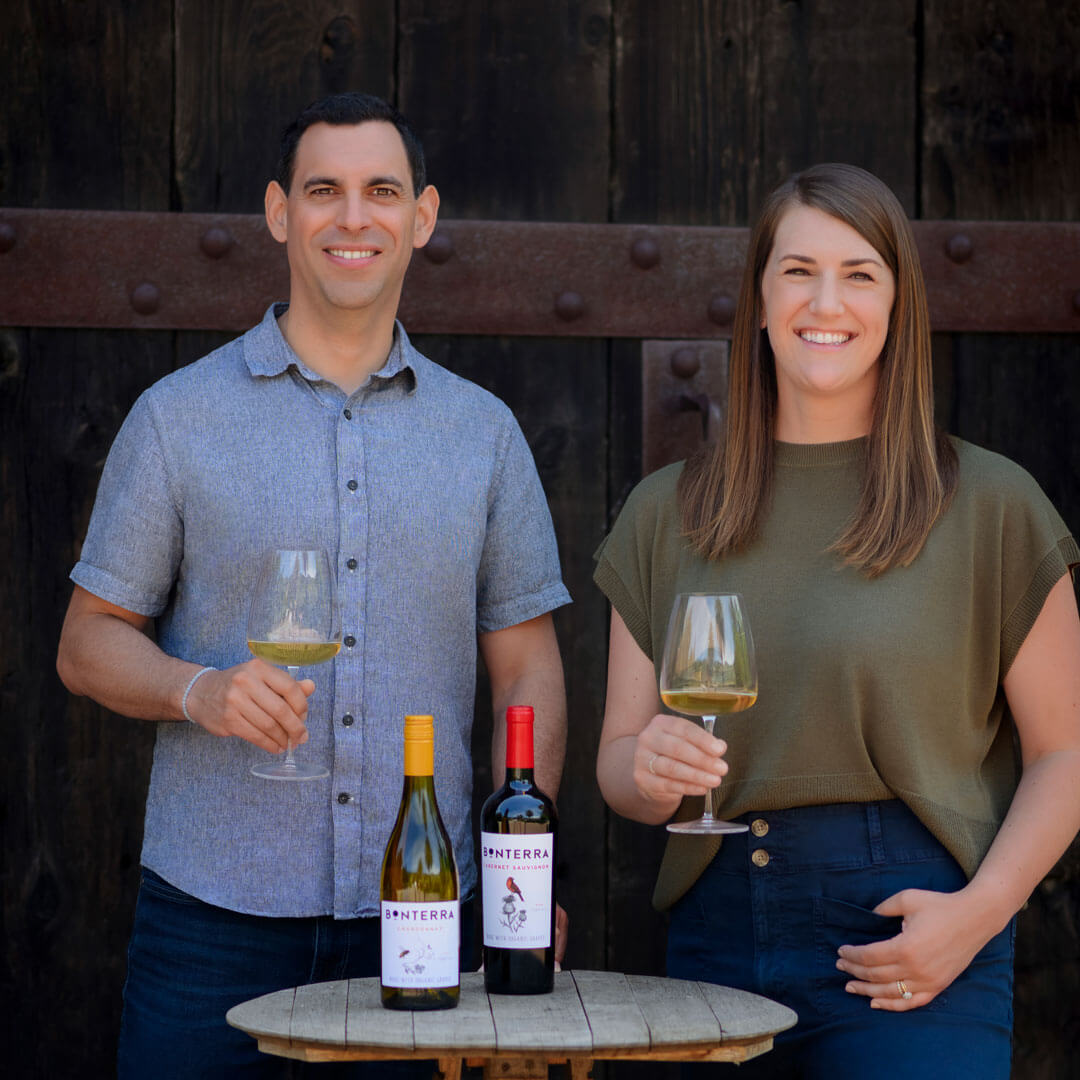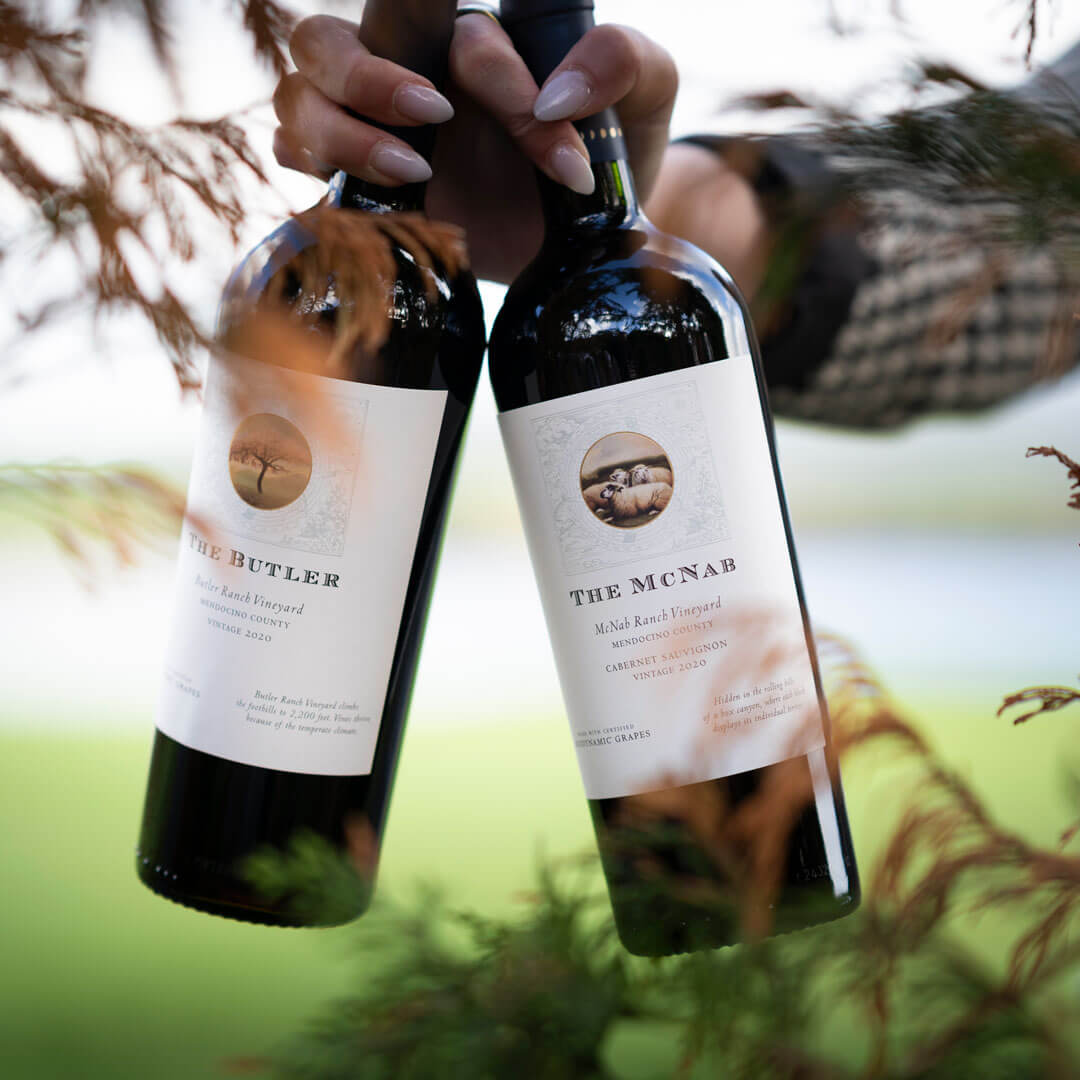Every bottle of wine holds within it a story waiting to unfold. At Bonterra, where our commitment to organic and regenerative farming creates wines of distinctive character, we understand that patience and attention transform both land and wine. Just as our vines require time to express their full potential, many wines benefit from a period of gentle awakening—a practice known as letting the wine breathe.
Understanding Wine’s Relationship with Air
When wine meets air, a graceful metamorphosis begins. So-called volatile compounds emerge, releasing a complex dance of aromas into the air. Tannins, those structural elements that give red wines their backbone, begin to soften and integrate. Fruit notes become more pronounced, while mineral aspects gain clarity. This tremendous medley of reactions transforms a tightly wound wine into one capable of showing its full breadth of character.
When Each Wine Finds Its Sweet Spot
Just as different grape varieties require varying periods to achieve optimal ripeness in our organic vineyards, each wine style benefits from its own ideal period of aeration. Understanding these rhythms helps us guide each wine to its most expressive moment.
Our Cabernet Sauvignon and other full-bodied red wines show remarkable evolution after 30 to 60 minutes of breathing time. The journey begins with primary fruit notes emerging from behind a veil of structure. As time passes, those initial impressions deepen and expand, while the wine’s textural elements soften and integrate. After about an hour, robust wines often achieve a harmonious balance between power and elegance.
For optimal enjoyment of full-bodied reds, consider these key moments in the breathing process:
- First 15 minutes: initial aromatics emerge, tannins begin to soften
- 30-45 minutes: secondary flavors develop, texture becomes more refined
- 45-60 minutes: greater integration is observed, revealing complexity
Medium-bodied reds, such as Merlot and Sangiovese, find their sweet spot more quickly, typically reaching appealing expression within 20 to 30 minutes. These wines undergo a beautiful transformation as tannins integrate and aromatic profiles expand, creating a sought-after balance between fruit, earth, and structure.
For more delicate varieties like Pinot Noir, a gentler approach proves most rewarding. These wines often need just 15 to 20 minutes to reveal subtle complexities. Too much air can overwhelm their delicate character, so we recommend careful attention, sipping and noting changes as you go.
The Symphony of White and Sparkling Wines
White and rosé wines generally require minimal aeration, though certain fuller-bodied white wines, particularly those with some age, benefit from 15 or more minutes of gentle exposure to air. Complex Chardonnay, for instance, might reveal additional layers of flavor with brief aeration, while crisp Sauvignon Blanc typically shows best with just a gentle swirl in the glass.
For white wines that benefit from breathing, watch for these signs of development:
- Enhanced aromatic complexity, including minerality
- Softening of any oak influence
- Integration of fruit, wood and mineral notes
- Improved texture on the palate
Methods of Aeration: From Traditional to Contemporary
There are several paths to aeration, each with its own character and charm. Traditional decanting, perhaps the most time-honored approach, provides both ceremonial and practical benefits. As wine flows from bottle to decanter, it begins its interaction with air while being separated from sediment. The broad surface area of a well-designed decanter continues this conversation, allowing wine to develop at its own pace. Proper aeration also plays a role in how to keep wine fresh after opening, ensuring that flavors remain balanced over time.
Modern Innovation in Wine Aeration
For those seeking to accelerate this process, modern tools offer efficient alternatives. Aerating pourers and Venturi-style devices create immediate oxidation through clever design, while specialized wine funnels combine filtration and aeration in one elegant solution. Even the simple act of swirling wine in a well-paired glass can provide sufficient aeration for many wines, particularly when paired with thoughtful timing.
Professional Insights: Signs of Perfect Aeration
How do you know when a wine has reached its optimal breathing point? The signs reveal themselves to our senses in subtle ways. Aromatically, initial notes become more pronounced while secondary characteristics emerge from hiding. Sharp edges soften, and elements begin to find their place in aromatic harmony. On the palate, tannins feel more polished, acidity falls into balance, and the overall impression becomes more seamless, leading to a lingering finish that tells the complete story of the wine.
Key indicators that your wine has reached its peak:
- Aromatics show full expression and complexity
- Tannins feel smooth and integrated
- Flavors display depth and harmony
- The finish lengthens and becomes more refined.
Can You Over-Aerate Wine?
While aeration enhances a wine’s character, too much exposure can diminish its vibrancy. Delicate wines like Pinot Noir and aged vintages are particularly sensitive to extended air contact. Overexposure can cause fruit flavors to fade, leaving a wine feeling flat or oxidized. Knowing when to stop aeration ensures that each wine reaches—but does not surpass—its peak expression.
Signs of over-aeration:
- Aromas become muted or dull.
- Fruit flavors recede, leaving behind a tired profile.
- The wine’s structure feels loose or disjointed.
The Influence of Age and Vintage
Young wines often show the most dramatic transformation with aeration, their youthful intensity benefiting from time to soften and expand. Older wines, particularly those beyond 15 years, require a more gentle approach. These mature offerings have already undergone significant evolution in bottle and need only a brief awakening to show their full complexity.
Does Wine Need to Breathe After Being Stored?
So, does wine need to be refrigerated? A wine’s resting period after storage impacts how it presents itself when poured. Bottles stored on their side in a cool, dark place retain their integrity, but sudden temperature shifts or movement can temporarily suppress aromas. If a wine has been stored long-term or transported recently, letting it rest upright for a few days before opening allows sediment to settle and the wine to stabilize.
Factors affecting post-storage aeration:
- Recently shipped wine: Needs at least a few days to settle before opening.
- Older vintages: Should be opened carefully to avoid disturbing sediment.
- Chilled wines: Require a slight rise in temperature before full aromatic release.
Environmental Considerations
The environment plays a crucial role in how wine responds to aeration. Room temperature, humidity, and even barometric pressure can influence how quickly and effectively a wine opens up. Consider these elements when determining your wine’s optimal breathing time:
- Serving temperature affects aeration rate
- Ambient humidity influences aromatic expression.
How Glassware Impacts Aeration
The shape and design of a wine glass influence how a wine interacts with air. A wide-bowled glass allows for greater oxygen exposure, accelerating aeration and helping aromatic compounds express themselves more fully. This is particularly beneficial for bold reds like Cabernet Sauvignon. In contrast, narrower glasses preserve the delicate nuances of lighter wines, such as Pinot Noir and crisp whites. Choosing the right glass enhances both aeration and the overall tasting experience.
Key considerations for optimal glassware selection:
- Full-bodied reds: Large, rounded bowls to encourage aeration and soften tannins.
- Light reds and whites: Smaller openings to concentrate aromas and maintain freshness.
- Sparkling wines: Flutes to preserve bubbles or tulip-shaped glasses for enhanced aromatics.
A Mindful Approach to Service
Like our thoughtful farming practices, approaching wine service with intention enhances the experience. Consider the occasion’s timing, ensuring proper serving temperature before beginning aeration. A wine served too cold will need additional time to reveal its character, while one too warm might evolve too quickly.
Creating Perfect Moments
Understanding aeration is a key step toward deeper wine appreciation. Each bottle presents an opportunity to explore how time and oxygen reveal hidden dimensions of character—much like how our organic, regenerative farming practices gradually unveil the true potential of our land and vines.
We invite you to experiment with these guidelines through our Bonterra wine club, similar to a wine subscription. Notice how each variety responds differently to air, developing its own unique rhythm of expression. Remember that while these suggestions provide a framework, your palate remains the ultimate guide in discovering each wine’s perfect moment of revelation. Through mindful attention to aeration, you’re able to celebrate both the craft of winemaking and the patient work of nature—creating moments where wine’s full potential can shine through, telling stories of both earth and artistry in each thoughtfully raised glass. If you’re ready to buy wine online, explore our collection and start your journey with Bonterra wines today.




